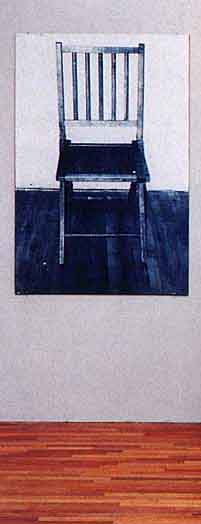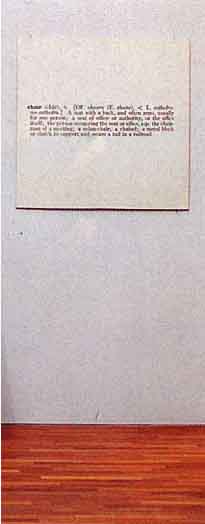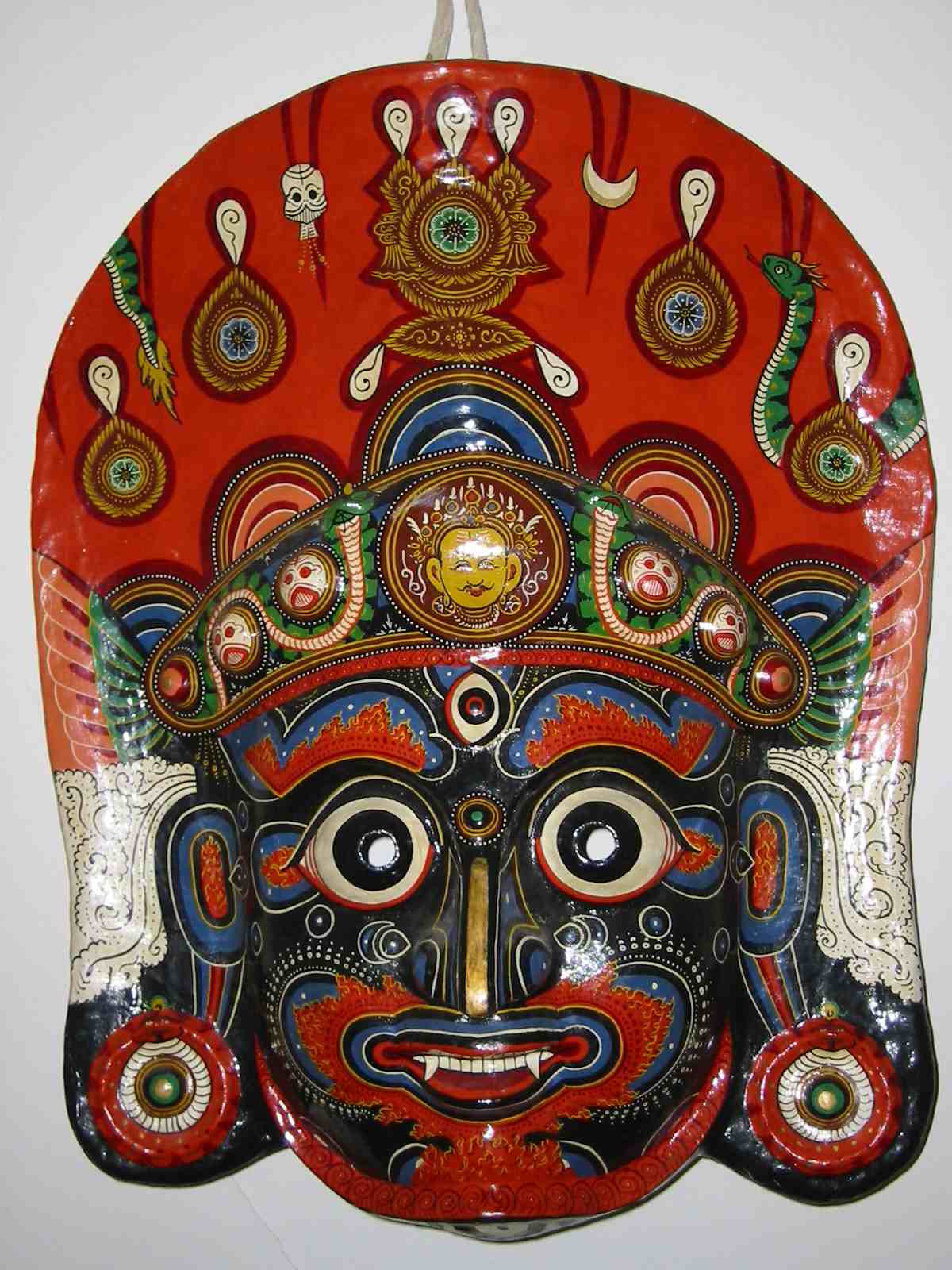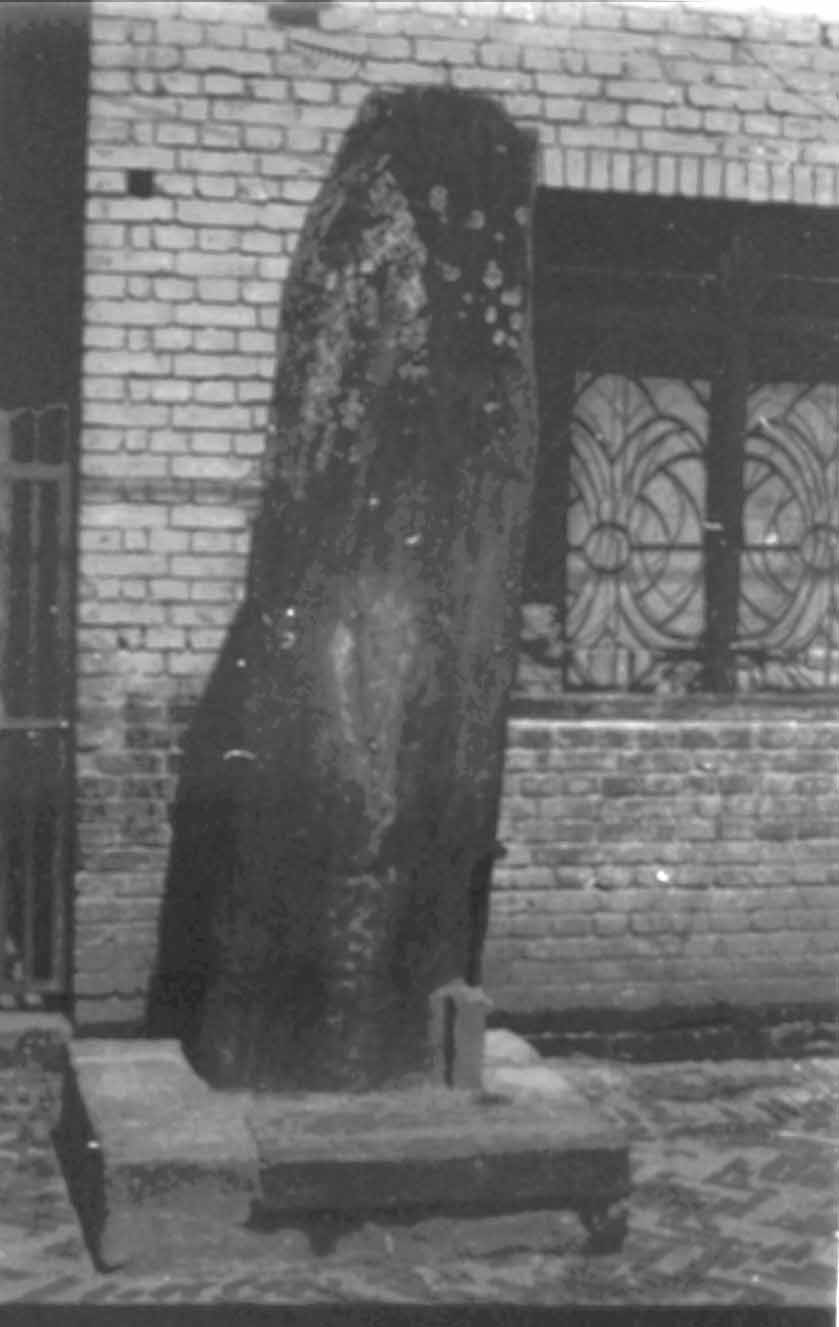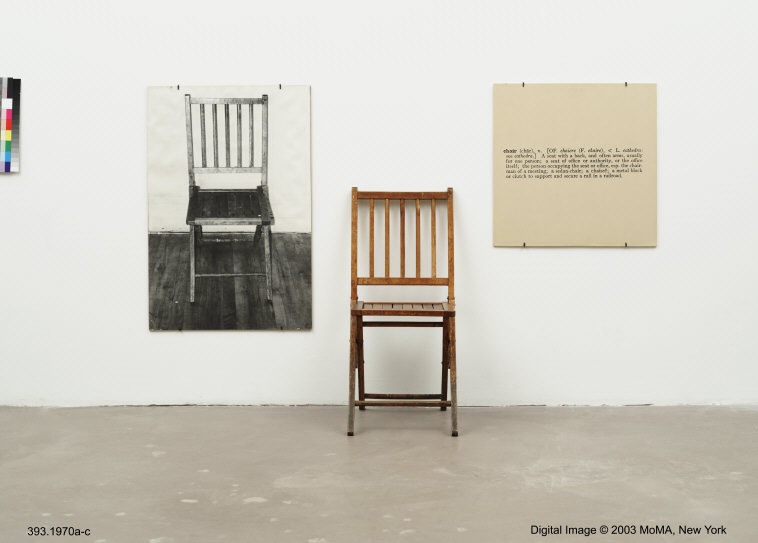Conclusion
Can one write about god-images without being hypocritical? As our "reading" of the god Bhairava through Kosuthís One and Three Chairs demonstrates, conceptual art offers a dynamic analytic for demystifying the ideal treatment of religious images. The key to such praxis, as Kosuth suggests in the introduction to the Sixth Investigation: Proposition 14, is that ìart only exists as a contextî (1991 [1971]). As he argues in a latter essay, this context is not just about ideas, but consists of a ìconcrete presence.î That is, that images are contextualized in relation to a complex matrix of information, received, revolved and mediated by a host of material systems of communication (1992).
There is not one ìBhairavaî that can be revealed through an iconographic reading. Instead, as illustrated by Kosuthís One and Three Chairs, there is a constellation of god-images which are always already physically mediated and embedded in concrete social relations. Foregrounding the materially of religious discourse interrupts iconographyís hypocrisy, which rests upon a transcendental understanding of the divine as supersensible, nonmaterial, dichotomous, and self-creating. Far from being a neutral taxonomy, iconographyís hypocrisy tends to structure knowledge not only to benefit the West, but also elite educated males. In the human sciences, iconographic readings have tended to privilege the linguistic, the discursive, and the cognitized over the visceral and tacit. It tends to lead to words about words, to books about books. As we have seen, the cautions about iconography are even more apt for religious studies; the subtle knowledge modeling of iconography transforms all religion into a poor reflection of a Protestant-based Christianity. The concern is not just with content, but with strategies of mediation. These paradigms emphasize a series of hierarchical dichotomies between such categories as sacred and profane, belief and practice, doctrine and law, individual and community, universalizing and particularizing, as well as tradition and modernity.
The danger with an iconographic reading is not that Bhairavaís god-images are being mediated through writing. The peril is that iconography perpetuates discourses that systematically operate to benefit the already privileged members of society at the expense of others. For instance, rather than being an essential object, Bhairvaís god-image is created by a constellation of discourses by which the material is high-jacked to reveal an ideal transcendental signified and to reinforce a dominant view of the world. In both cases, Bhairava is defaced. He is no longer situated in his own domain of social practices, but becomes a signifier of written transcendental categories which are hypocritical because by hiding behind the ideal they mask the material. This is even more damaging for the study of South Asia. Not only has iconography forced Hinduism to conform to a Christian theological model, but it has inadvertently strengthened Hindu fundamentalisms. As Joanne Waghorne has argued, what orientalists "once argued with words," fundamentalist groups now "fight with bricks and blood" (1991, 16).
![]() Conclusion
Conclusion
